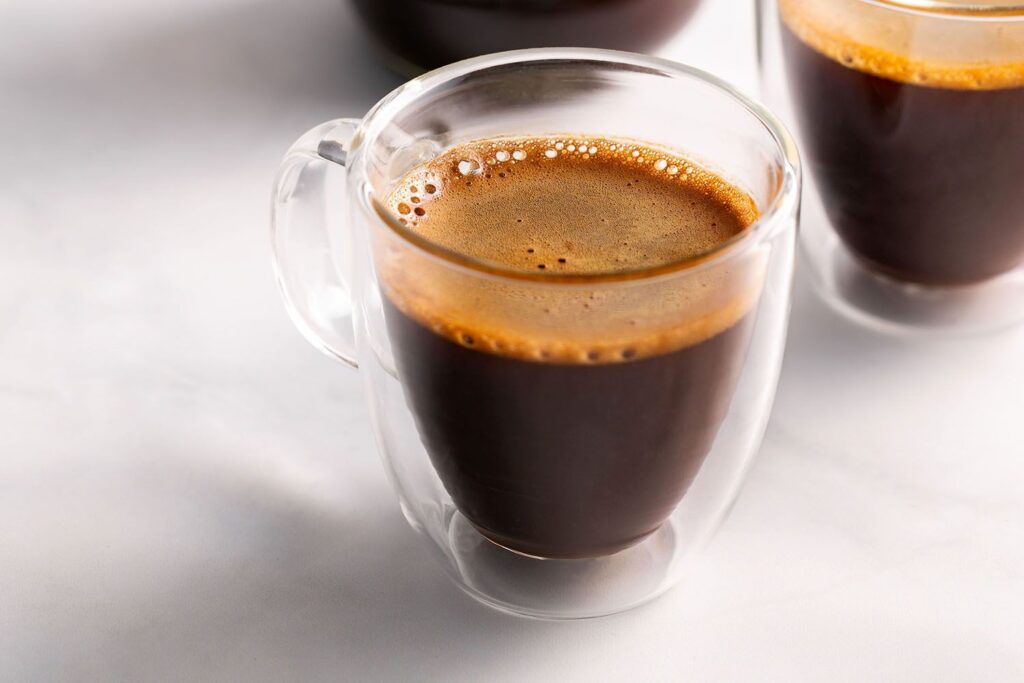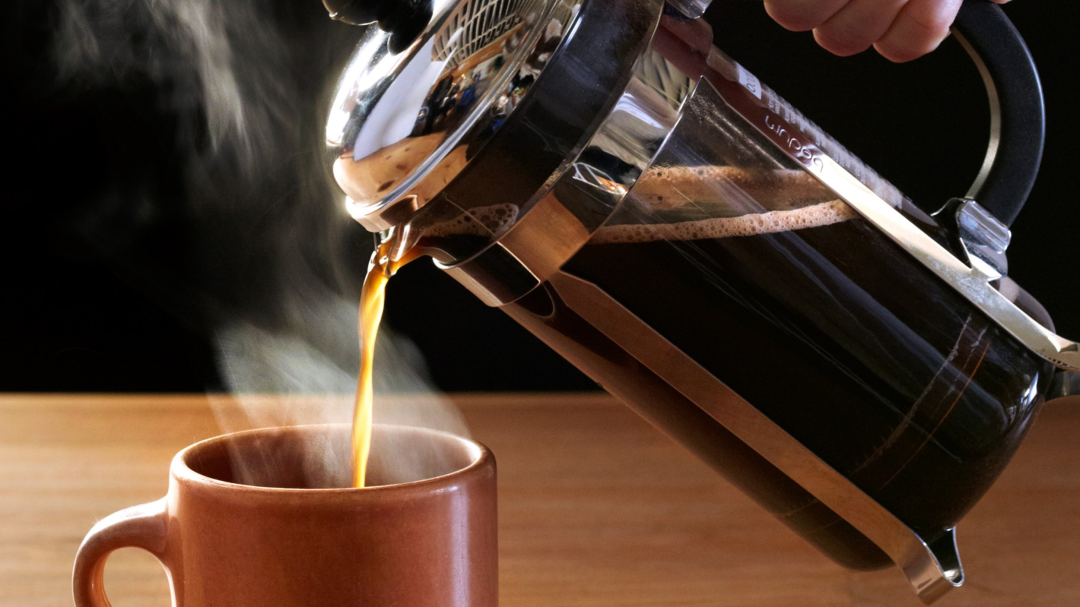Coffee vs Espresso: What’s the Real Difference?
Espresso vs Coffee is one of the world’s most loved beverages versatile, flavourful, and brewed in countless ways. But among all the brewing styles, the battle between coffee vs espresso continues to stir debate. Which one is stronger? Tastier? More caffeinated?

In this post, we’ll compare coffee and espresso across flavour, caffeine, brewing techniques. Let’s brew!
The Basics: What Sets Coffee and Espresso Apart?
Coffee (Drip, French Press, Pour-Over)
Coffee, in its most familiar form, is brewed by steeping coarsely ground beans in hot water. Unlike espresso, which relies on high pressure, coffee uses gentle extraction methods — most often gravity or immersion.
Some of the most popular brewing techniques include:
- Drip coffee: Hot water drips slowly over a filter of ground coffee, producing a clean, light-bodied brew.
- French press: Grounds steep fully in hot water before being pressed down with a plunger, resulting in a heavier body and oils.
- Pour-over: A manual style where water is poured in precise circles over the grounds, giving more control over flavor clarity and balance.
Because of this slower, lower-pressure process, coffee is typically served in larger volumes anywhere from 8 to 16 oz (236–473 ml).
The flavor profile is often described as:
- Milder and smoother compared to espresso
- More nuanced and varied depending on roast, grind size, water temperature, and brewing time
- Easier to sip leisurely, making it ideal for mornings, work sessions, or long conversations
In short, coffee offers comfort and variety, making it the world’s go-to daily ritual.
The Basics: What Sets Coffee and Espresso Apart? Coffee (Drip, French Press, Pour-Over)

Coffee, in its most familiar form, is brewed by steeping coarsely ground beans in hot water. Unlike espresso, which relies on high pressure, coffee uses gentle extraction methods — most often gravity or immersion.
Some of the most popular brewing techniques include:
- Drip coffee: Hot water drips slowly over a filter of ground coffee, producing a clean, light-bodied brew.
- French press: Grounds steep fully in hot water before being pressed down with a plunger, resulting in a heavier body and oils.
- Pour-over: A manual style where water is poured in precise circles over the grounds, giving more control over flavor clarity and balance.
Because of this slower, lower-pressure process, coffee is typically served in larger volumes — anywhere from 8 to 16 oz (236–473 ml).
The flavor profile is often described as:
- Milder and smoother compared to espresso
- More nuanced and varied depending on roast, grind size, water temperature, and brewing time
- Easier to sip leisurely, making it ideal for mornings, work sessions, or long conversations
In short, coffee offers comfort and variety, making it the world’s go-to daily ritual.
Flavour Profile: Mild or Intense?
- Coffee tends to have a wide flavour range: nutty, fruity, earthy depending on roast, origin, and brew method. It’s often described as smoother and more “drinkable” in larger volumes.
- Espresso packs a punch. Its full-bodied flavour and concentrated form bring out more complex tasting notes, bitterness, and aroma intensity.
Brewing Techniques: Simplicity vs Specialization
- Coffee Brewing:
- Methods include drip, pour-over, siphon, AeroPress, or French press
- Longer extraction times (2–6 minutes)
- Easier for beginners and low-cost setups
- Espresso Brewing:
- Requires an espresso machine and burr grinder
- High-pressure extraction in 20–30 seconds
- Steeper learning curve but professional-level results

Caffeine Content: Who Packs More Punch?
- Espresso has more caffeine per ounce, but due to the small serving size, it often contains less total caffeine than a full mug of brewed coffee.
- A single espresso shot (~30ml) = 63 mg caffeine (avg)
- A 12 oz brewed coffee = 120–140 mg caffeine (avg)
Serving Styles & Versatility
| Type | Common Serving | Customization | Use in Drinks |
|---|---|---|---|
| Coffee | 8–16 oz mug | Cream, sugar, flavour shots | Mostly standalone |
| Espresso | 1–2 oz shot | Milk-based drinks, sugar | Foundation for lattes, cappuccinos, etc. |
Final Thoughts: So, Coffee or Espresso?
The coffee vs espresso debate boils down to one thing: your personal taste.
- Want a strong, fast jolt with rich flavour? Go for espresso.
- Prefer a milder, smoother, and leisurely experience? Stick with coffee.
Either way, you’re sipping on a legacy of flavour, culture, and community.

Coffee Travel Guide: Best Cafés and Roasters Around the World.
For coffee lovers, exploring the world often means discovering unique cafés and specialty roasters. From local hidden gems to famous…

Sustainable Coffee: How to Drink Responsibly.
Sustainable Coffee: How to Drink Responsibly. Introduction Sustainable coffee isn’t just a trend it’s a movement that supports farmers, protects the environment,…
Coffee Storage Tips: Keeping Beans Fresh and Flavourful.
Coffee Storage Tips: Keeping Beans Fresh and Flavourful. Introduction Fresh coffee starts with proper storage. Even high-quality beans lose flavour and aroma…
Specialty Coffee Drinks: Lattes, Cortados, and More Explained.
Coffee culture isn’t just about black coffee it’s also about specialty drinks that combine espresso, milk, foam, and ………………. Read…
Coffee and Sleep: How to Enjoy Your Brew Without Insomnia.
Coffee can be a lifesaver in the morning, but drinking it at the wrong time can disrupt sleep and impact…
Healthy Coffee Habits: Enjoy Your Brew Without the Guilt.
Healthy Coffee Habits: Enjoy Your Brew Without the Guilt Introduction Coffee can be one of life’s greatest pleasures, but many people worry…
What’s Your Favourite?
Are you Team Coffee or Team Espresso? Let us know in the comments below!
About the Author

Brendon McAliece (aka Gunnie) is the voice behind DreamingCoffee.com. A world traveller and coffee enthusiast, he blends curiosity, culture, and brewing know-how to help readers discover flavour and inspiration in every cup.
Would you like me to give you two more variations (one casual, one more professional) so you can swap them around depending on the post style?
Learn more @
DreamingGuitar.com – DreamingCoffee.com – LetsFlyVFR.com
Home – Blog – Shop – About
As an Amazon affiliate I may earn on qualifying sales.
Coffee vs Espresso: What’s the Real Difference?
A deep dive into the differences between coffee and espresso — flavor, brewing, caffeine, and more.
Read MoreHow to Brew the Perfect French Press Coffee
Master your French press technique and extract maximum flavor from your beans.
Read MoreTop 5 Espresso Machines for Beginners (2025)
Affordable, beginner-friendly espresso machines to kickstart your home barista journey.
Read MoreLight, Medium, or Dark Roast? Coffee Roasts Explained
Understand how roasting affects taste, body, and acidity in your daily brew.
Read MoreA Beginner’s Guide to Pour-Over Coffee
Step-by-step guidance on pour-over brewing for clarity, control, and full flavor.
Read MoreWhy Freshly Ground Coffee Beans Matter
Grinding your beans fresh can drastically improve taste — here’s why it matters.
Read More





